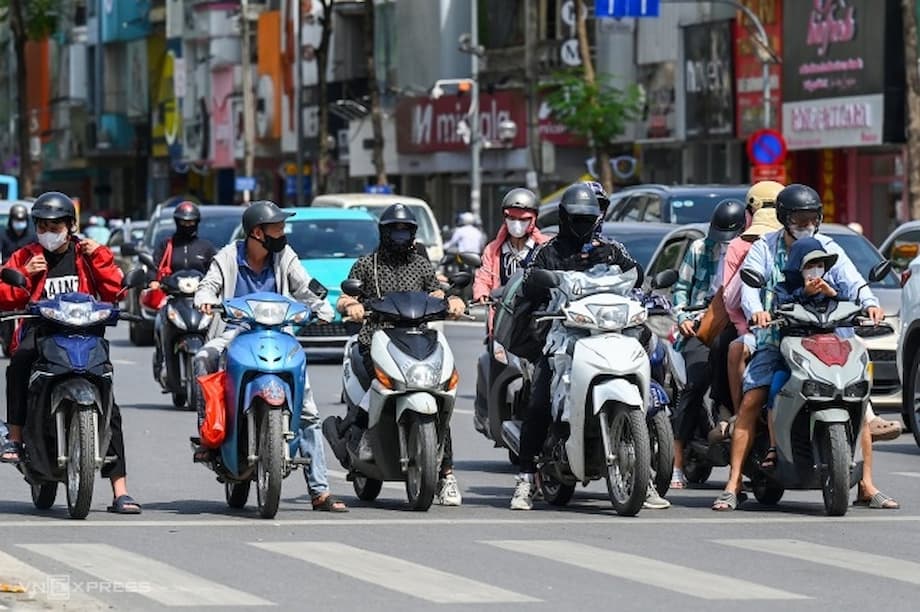Hanoi’s Bold Move: Banning Gasoline Motorbikes in the Heart of the City
Hanoi, Vietnam’s bustling capital, is on the cusp of a transportation revolution. In a landmark policy shift, city authorities have announced a ban on gasoline-powered motorbikes within the central Ring Road 1 area, effective July 1, 2026. This move, part of a broader national strategy to phase out fossil-fuel vehicles, aims to tackle the city’s chronic air pollution and modernize its urban transport system. The plan will expand to cover more districts by 2028 and 2030, eventually including gasoline-powered cars. While the policy is ambitious, it has sparked heated debate among residents, industry leaders, and policymakers about its feasibility, fairness, and broader implications for Hanoi’s future.
- Hanoi’s Bold Move: Banning Gasoline Motorbikes in the Heart of the City
- Why the Shift? Pollution, Congestion, and Urban Health
- Electric Motorbikes: The Case for Change
- Public Response: Reluctance, Hope, and Caution
- Industry and Policy: Navigating the Transition
- Infrastructure and Public Transport: The Missing Pieces
- Lessons from Abroad: Norway and China Set the Pace
- Opportunities and Challenges: Economic, Environmental, and Social Impacts
- Looking Forward: A Roadmap for Hanoi’s Green Future
- In Summary
Why the Shift? Pollution, Congestion, and Urban Health
Hanoi’s streets are legendary for their sea of motorbikes—over 6.9 million in a city of about 8 million people, with another 1.2 million vehicles entering daily from neighboring provinces. This reliance on personal vehicles has contributed to some of the world’s worst urban congestion and air pollution. According to city authorities, more than two-thirds of Hanoi’s smog is caused by petrol vehicles, though the World Bank estimates traffic accounts for about 25% of fine particulate (PM2.5) emissions. Regardless of the exact figure, the impact on public health is severe: 40% of residents are exposed to pollution levels five times higher than World Health Organization recommendations, with children and the elderly at greatest risk.
Traffic jams cost Hanoi an estimated $1–1.2 billion annually in lost productivity and logistics expenses. The city’s geography—rarely swept by strong winds—traps pollution, compounding the problem. The government’s new directive is a response to this crisis, aiming to make Hanoi a cleaner, quieter, and more livable city.
Electric Motorbikes: The Case for Change
Electric motorbikes offer several advantages over their gasoline counterparts, especially in dense urban environments:
- Zero Local Emissions: Electric bikes produce no tailpipe emissions, helping to reduce smog and improve air quality on city streets.
- Lower Operating Costs: Owners save on fuel, oil changes, and many routine maintenance tasks. Electricity is cheaper than gasoline, and modern batteries can last 7–10 years before needing replacement.
- Instant Acceleration and Quiet Operation: Electric motors deliver power immediately, making stop-and-go city traffic less tiring and more efficient. They also reduce noise pollution, contributing to a more pleasant urban environment.
- Centralized Pollution Management: While power plants may still burn fossil fuels, their emissions can be managed more effectively with advanced filtration systems. Over time, Vietnam plans to increase its share of renewable energy, making the entire electric vehicle ecosystem cleaner.
Battery technology has advanced rapidly, with lithium iron phosphate batteries now common in electric bikes. These are safer, longer-lasting, and less prone to fire or explosion than earlier models. For most city dwellers, range anxiety is less of a concern: modern electric bikes can easily cover 100 km on a single charge, more than enough for daily commutes.
Economic and Environmental Incentives
Research shows that economic incentives—especially sales tax reductions—are highly effective in encouraging electric motorbike adoption. Technological improvements, such as better batteries and more reliable performance, also play a key role. However, consumers tend to discount future fuel savings, focusing instead on upfront costs and immediate benefits.
Public Response: Reluctance, Hope, and Caution
Despite the clear benefits, many Hanoians remain hesitant to switch from gasoline to electric motorbikes. Surveys indicate that only about 11% of students and around 5–12% of all two-wheeler sales in recent years are electric. Several factors contribute to this reluctance:
- High Upfront Costs: While prices are falling, electric motorbikes still cost more than many gasoline models. Battery replacement expenses are a concern, though subscription and leasing models are emerging to address this.
- Charging Infrastructure: The city’s power grid and public charging network are not yet ready for mass adoption. Most charging stations are designed for cars, not bikes, and home charging can be risky in older apartment buildings.
- Behavioral and Habitual Barriers: Many older riders are attached to their gasoline bikes, valuing their durability and familiarity. Concerns about range, charging time, and maintenance persist.
- Market Quality Concerns: There is anxiety that, if domestic manufacturers do not keep pace, low-quality, cheap electric bikes from abroad could flood the market, undermining safety and reliability.
Students and younger riders are leading the shift, attracted by low running costs and environmental benefits. Companies like VinFast and Selex are innovating with battery-swapping stations and subscription models, making electric bikes more accessible for delivery drivers and daily commuters. Still, widespread adoption remains a challenge.
Industry and Policy: Navigating the Transition
The transition to electric motorbikes is not just a technical or environmental issue—it is a complex economic and social transformation. The Vietnam Association of Motorcycle Manufacturers, which includes giants like Honda, Yamaha, Suzuki, Piaggio, and SYM, has urged the government to extend the transition timeline. They warn that a rapid ban could disrupt supply chains, threaten hundreds of thousands of jobs, and impose heavy costs on low-income residents who rely on affordable gasoline bikes.
Manufacturers are responding with new electric models, buy-back schemes, and discounts to encourage adoption. VinFast, Yadea, and Dat Bike are expanding their product lines and infrastructure, while Honda and Yamaha are piloting battery subscription programs to lower upfront costs. However, the industry faces significant hurdles:
- Supply Chain Disruption: Most suppliers currently produce parts for internal combustion engines. A rapid shift could leave many without work or force costly retooling.
- Charging Infrastructure: Building a robust network of charging and battery-swapping stations is essential. VinFast leads with a nationwide network, but coverage is still limited, especially for bikes.
- Financial Support: The government is considering subsidies, tax exemptions, and concessional loans to help residents afford new electric bikes. For the 600,000 people living within Ring Road 1, replacing all gasoline bikes could cost $600 million—a significant burden for many households.
Experts emphasize the need for a realistic, phased roadmap that balances environmental goals with economic realities. Suggestions include starting with the oldest, most polluting vehicles, supporting commercial fleets in making the switch, and providing targeted assistance to vulnerable groups.
Infrastructure and Public Transport: The Missing Pieces
For Hanoi’s electric transition to succeed, improvements in public transport and urban infrastructure are crucial. Despite ambitious targets, only 18% of travel demand is currently met by public transport, far short of the city’s goal of 50–55% by 2030. The metro system is still limited, and buses are often outdated and overcrowded.
To reduce reliance on personal vehicles, the city must invest in:
- Expanding and modernizing the metro and bus networks
- Building intermodal transfer stations and digitizing ticketing systems
- Ensuring affordable parking and transfer options at the edges of restricted zones
- Developing charging infrastructure in every residential area
Without these improvements, many residents—especially those commuting from outer districts or neighboring provinces—will struggle to adapt. Delivery drivers, ride-hailing workers, and low-income households are particularly vulnerable to disruption.
Lessons from Abroad: Norway and China Set the Pace
Vietnam is not alone in its push for electric mobility. Norway leads the world in electric vehicle adoption, with nearly 89% of new cars sold in 2024 being electric. This success is attributed to strong government incentives, robust infrastructure, and consistent policy support. China, meanwhile, has demonstrated how cities can rapidly clean up their air by mandating electric two-wheelers, transforming urban life with quieter, cleaner streets.
Vietnam’s experience will be closely watched by other Southeast Asian countries, where motorcycles vastly outnumber cars. If Hanoi can manage a smooth transition, it could become a model for electrifying personal transport in developing nations.
Opportunities and Challenges: Economic, Environmental, and Social Impacts
The shift to electric motorbikes presents both significant opportunities and formidable challenges:
- Economic Growth: The transition could create up to 6.5 million new manufacturing jobs and save $498 billion in oil imports by 2050. Domestic manufacturers have a chance to become global leaders in electric two-wheelers.
- Environmental Benefits: Air pollution costs could be cut by $6.4 billion annually by 2050, with substantial reductions in greenhouse gas emissions.
- Social Equity: Policymakers must ensure that low-income and vulnerable groups are not left behind. Direct subsidies, preferential loans, and targeted support are essential.
- Technical Hurdles: The power grid must expand by 3–5% annually to support mass charging. Battery recycling and disposal systems need to be developed to prevent new environmental problems.
- Behavioral Change: Success depends not just on technology, but on changing habits and perceptions. Public awareness campaigns and education will be key.
Experts recommend establishing a dedicated intergovernmental agency to coordinate the transition, ensuring cross-sector collaboration and effective implementation.
Looking Forward: A Roadmap for Hanoi’s Green Future
Hanoi’s electric motorbike revolution is both a necessity and an opportunity. The city’s air quality, public health, and economic vitality depend on a successful transition. But the path forward is complex, requiring careful planning, investment, and social support.
Key steps for a successful transition include:
- Phasing in bans gradually, starting with the most polluting vehicles
- Expanding charging and battery-swapping infrastructure
- Providing financial incentives and support for low-income residents
- Investing in public transport and urban infrastructure
- Promoting domestic manufacturing and ensuring product quality
- Educating the public and building awareness of the benefits of electric mobility
As one Vietnamese motorbike executive put it,
Once authorities make a decision, it is no longer about whether you want to adapt, but that you must.
The challenge now is to ensure that this adaptation is fair, inclusive, and sustainable—so that Hanoi’s streets can become cleaner, quieter, and more livable for generations to come.
In Summary
- Hanoi will ban gasoline motorbikes from its central Ring Road 1 area starting July 1, 2026, expanding to more districts by 2030.
- The policy aims to combat severe air pollution and congestion, but faces challenges including high upfront costs, limited charging infrastructure, and social equity concerns.
- Electric motorbikes offer lower operating costs, zero local emissions, and quieter operation, but adoption remains limited due to behavioral and economic barriers.
- Industry leaders urge a phased, realistic transition to avoid disrupting supply chains and livelihoods.
- Investment in public transport, charging infrastructure, and targeted financial support is essential for a smooth transition.
- Vietnam’s experience could set a precedent for electrifying personal transport in developing countries.












